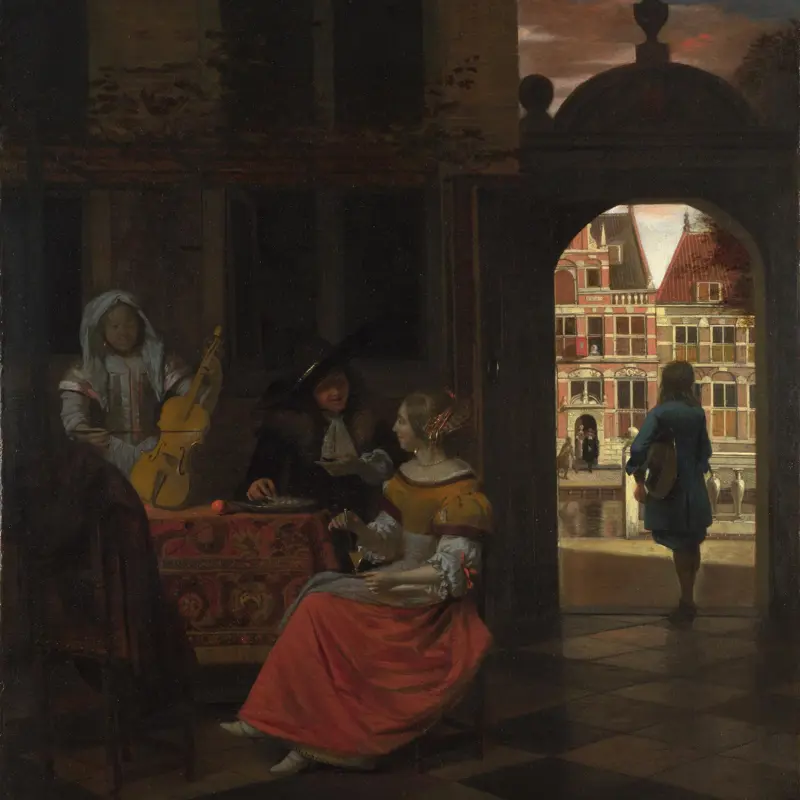Pieter de Hooch, 'A Woman and her Maid in a Courtyard', about 1660/1
About the work
Overview
We seem to be looking at a scene just outside a kitchen. A maid has brought a steaming cauldron out from the kitchen stove and placed it near the open drain in the courtyard. Apparently obeying her mistress, who stands in front of her, she seems to have taken the fish out of the cooking pot; perhaps she is doing this outside to make it easier to pour away the water.
One of the most appealing aspects of Dutch seventeenth-century painting is the insight it gives us into everyday life, and especially the lives of women. Scenes of ordinary mothers and children or maids and their mistresses at ease in their own homes had hardly been depicted in art before. But in Holland from about the 1640s, the theme became a popular one and Pieter de Hooch’s paintings are some of the most evocative examples of the genre.
Key facts
Details
- Full title
- A Woman and her Maid in a Courtyard
- Artist
- Pieter de Hooch
- Artist dates
- 1629 - after 1684
- Date made
- About 1660/1
- Medium and support
- Oil on canvas
- Dimensions
- 73.7 × 62.6 cm
- Inscription summary
- Signed; Dated
- Acquisition credit
- Bought, 1869
- Inventory number
- NG794
- Location
- Room 16
- Collection
- Main Collection
- Frame
- 20th-century Replica Frame
Provenance
Additional information
Text extracted from the ‘Provenance’ section of the catalogue entry in Neil MacLaren, revised and expanded by Christopher Brown, ‘National Gallery Catalogues: The Dutch School: 1600–1900’, London 1991; for further information, see the full catalogue entry.
Exhibition history
-
2011Dirt: The Filthy Reality of Everyday LifeWellcome Trust24 March 2011 - 31 August 2011
-
2015Vermeer and Rembrandt: The Masters of the 17th Century Dutch Golden Age.Kyoto Municipal Museum of Art24 October 2015 - 5 January 2016Mori Arts Centre Gallery14 January 2016 - 31 March 2016
Bibliography
-
1960Maclaren, Neil, National Gallery Catalogues: The Dutch School, 2 vols, London 1960
-
1991Maclaren, Neil, revised by Christopher Brown, National Gallery Catalogues: The Dutch School, 1600-1900, 2nd edn (revised and expanded), 2 vols, London 1991
-
2001
C. Baker and T. Henry, The National Gallery: Complete Illustrated Catalogue, London 2001
About this record
If you know more about this work or have spotted an error, please contact us. Please note that exhibition histories are listed from 2009 onwards. Bibliographies may not be complete; more comprehensive information is available in the National Gallery Library.





